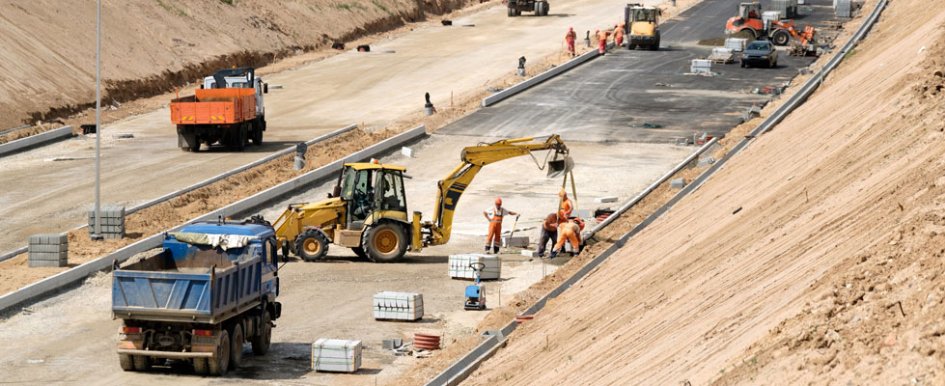
This year, Americans will head to the polls to decide which party will control state capitals, the United States House of Representatives, the U.S. Senate and the White House. The outcome of the 2020 election will have a significant impact on equipment manufacturers, the construction industry and the U.S. economy for years to come.
That’s why the Association of Equipment Manufacturers (AEM) is working to educate, engage and equip voters who care about and rely on manufacturing with everything they need to cast a vote this November. “Equipped to Vote” is the organization’s first-ever national campaign aimed at giving participants an opportunity to both learn more about the pro-manufacturing policies this year’s candidates need to support.
The construction industry and equipment manufacturers are inextricably linked. A thriving vibrant industry keeps equipment manufacturers strong. In fact, over one million construction equipment sector men and women build the lifts, cranes, pavers, excavators and other equipment that help the construction industry fix and modernize our nation’s infrastructure. From America’s roads, highways and bridges, to its ports, waterways, rail and much more, equipping construction workers with what they need starts with these manufacturers.
However, both equipment manufacturers and the U.S. construction sector are facing a series of critical challenges jeopardizing millions of jobs and the U.S. economy’s growth overall. To start, the coronavirus pandemic has rocked the construction sector and equipment manufacturers. For example, U.S. homebuilder sentiment dipped in April to its lowest level in over 7 years, which happened despite all but six states declaring construction workers “essential” to the economy.
It was the steepest monthly decline in the 30-year history of the National Association of Home Builders/Wells Fargo Housing Market Index. According to reports, a disrupted supply chain and rising unemployment posed increasingly large hurdles to the construction industry due to the coronavirus pandemic, and many residential and commercial builders canceled or delayed projects altogether.
Equipment manufacturers were also declared “essential,” but the COVID-19 crisis has disrupted the industry as well. AEM’s latest survey of over 100 executives leading the equipment manufacturing industry resulted in three quarters of respondents saying that the impact of COVID-19 on the overall economy is still very negative, and six out of 10 saying the federal government had still not done enough to support the equipment industry.
One of the top ways equipment manufacturers said the government could help reignite the industry is by passing comprehensive infrastructure legislation. More than eight out of 10 respondents said they would like to see a significant investment in infrastructure to help keep equipment manufacturers in business during the crisis and set the stage for the economic recovery.
Investing in America’s infrastructure—which is long overdue—would significantly benefit the construction sector. Infrastructure improvements are critical to increased investment, job creation and overall economic growth. A strong infrastructure benefits everyone—from urban areas to rural regions and from first responders to single families. Critical services like clean drinking water, reliable high-speed internet, telehealth for veterans and more all depend on high-quality infrastructure.
However, the current state of U.S. infrastructure—from roads and bridges to rural broadband and navigable waterways—lags behind our global competitors. The U.S. once had the best infrastructure in the world; and that gave our country a competitive advantage on a global scale. According to the World Economic Forum’s Global Competitiveness Survey, the U.S. is currently tied with Spain for the eleventh spot on a ranking of countries with the best infrastructures. Hong Kong (No.1), Singapore (No.2) and the Netherlands (No.3) take the top three spots.
One big reason we’ve lost our infrastructure advantage is the lack of leadership by elected officials. Washington lawmakers have been unable to work together to provide a long-term and sustainable funding mechanism for the Highway Trust Fund, which plays a crucial role in the funding of infrastructure projects across the country. After years of elected officials refusing to take action, the Highway Trust Fund now faces a projected shortfall in the billions by the end of 2020 if not provided with a permanent, dedicated, user-based revenue stream.
It is clear infrastructure presents both an urgent challenge and a singular opportunity for both presidential candidates, since it is an issue that affects all Americans. It is also an issue that 90% of Americans believe should be a priority for the next administration.
However, in 2018 and 2016 (and in elections prior), voters heard from candidates on both the right and the left about how they promised to do something significant when it comes to modernizing our nation’s infrastructure. Some pledged to “fix the damn roads,” while others promised to build “gleaming new roads, bridges, highways, railways and waterways all across our land.” Sadly, we are right back where we started, with no serious progress to show for it.
Equipment manufacturers—and the U.S. manufacturing sector as a whole—have been negatively impacted by the COVID-19 pandemic. Congress and the Trump Administration must continue to provide relief to manufacturers struggling to get back to normal. Small and medium construction equipment manufacturers are rapidly running out of time and money, and without short-term liquidity lifelines many of them will likely not weather the current crisis. We are looking to both candidates and elected officials up and down the ballot to support policies that will help the industry through this unprecedented crisis.
At the end of the day, it is the candidates’ platforms, not the party or person, that matter most. A pro-manufacturing platform—one that prioritizes investing in infrastructure, maintaining free and fair trade, supporting our nation’s farmers and their families—should matter to all of us.
2020-2021 Legislation to Watch
AEM is keeping tabs on a number of issues that impact equipment manufacturers and our partner industries (construction). Here are three areas where new bills introduced and voted on in Congress would benefit the construction and equipment industries:
- Surface transportation reauthorization
- Additional COVID-19 relief legislation
- Reauthorization of the Workforce Innovation and Opportunity Act
